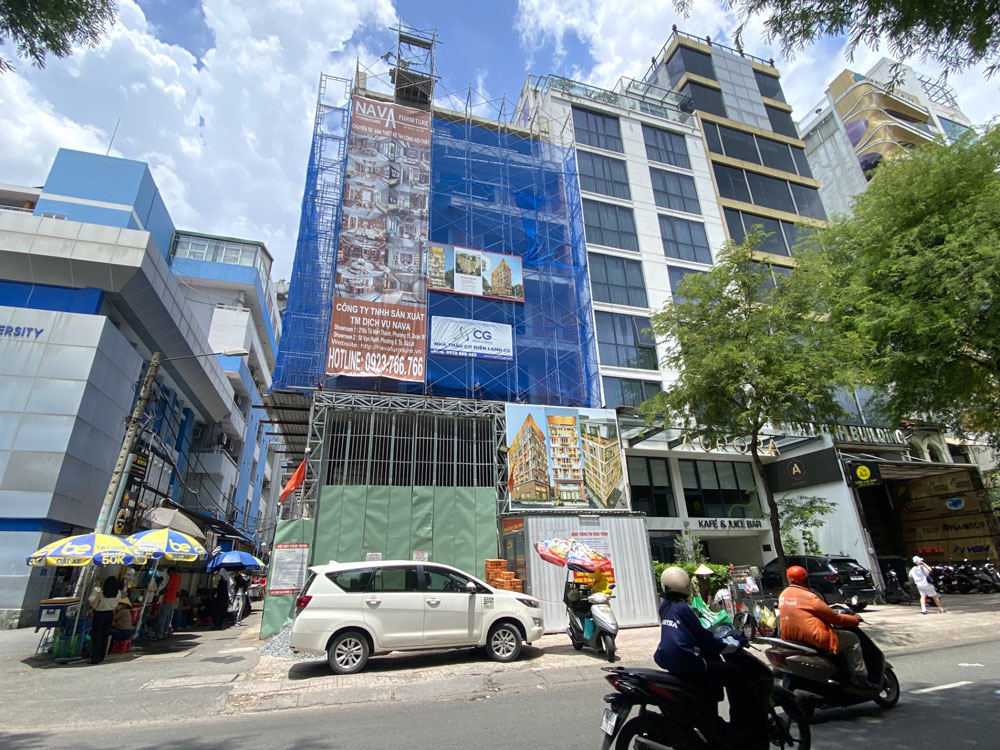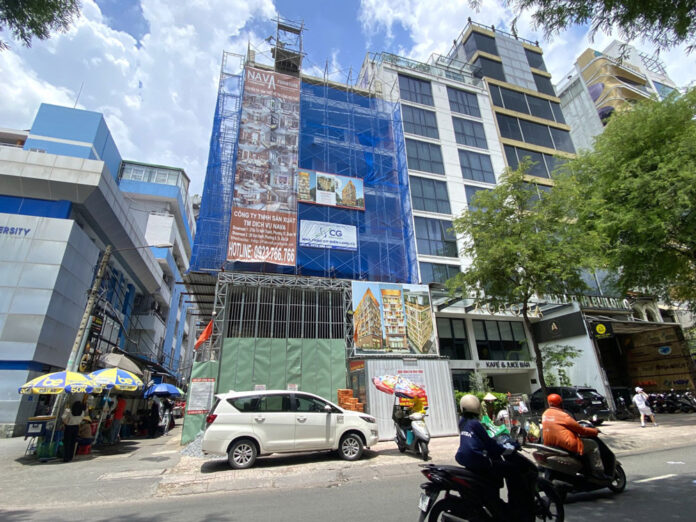Streamlining Construction Permits: An Interview with TS Vo Kim Cuong
“Simplifying the process without compromising urban management”
Interviewer: Could you share your thoughts on the role of construction permits in urban development and the challenges within the current permitting process?
TS Vo Kim Cuong: Construction permits are essential for ensuring compliance with urban plans, safety, and order. This pre-construction control is crucial as projects involve significant investments and complex urban relationships. However, the permit application process is often cumbersome due to vague legal requirements, multi-layered approval authority, and a lengthy application procedure, leading to potential corruption.
At its core, the permitting process should be straightforward yet effectively manage construction activities if regulations are clear and properly implemented.
Interviewer: In your opinion, what are the key considerations for shifting from pre-construction to post-construction control while ensuring stringent state management and convenience for citizens and enterprises?
– TS VÕ KIM CƯƠNG: It is necessary to amend the current legal provisions to reduce state intervention, clarify the legal responsibilities of individuals involved in the construction process, and delegate authority to lower levels.
In the case of abolishing construction permits for individual houses, it is essential to consider the content and management responsibilities of a project, including: compliance with planning, building setbacks, number of floors, height, density, fire safety, escape routes, architectural aesthetics on main streets, legal entity identification (pre-construction); interior architecture, foundation levels, infrastructure connections, ownership and neighbor relations, structural safety, construction safety, and environmental impact (post-construction control).
When eliminating construction permits, the pre-construction process should be simplified while maintaining stringent state management. Authorities must provide guidance to investors through architectural-planning information certificates (referred to as KT-QH certificates). Investors must understand these requirements for project design and construction.
Interviewer: So, what are the necessary procedures for citizens when building a house?
– If a project violates construction regulations, the owner bears the primary responsibility for any consequences. Therefore, the decision to obtain a construction permit rests with the owner. The state should only mandate permits for critical locations with specific architectural and planning requirements, lacking detailed 1/500 planning or clear management regulations.
In such cases, replacing construction permits with building registration certificates is advisable. For individual houses, these certificates can be issued by qualified employees of the People’s Committees at the ward or commune level. Building registration certificates signify citizens’ autonomy, protected by the state.

Streamlining permit procedures simplifies administrative processes. Photo: QUOC ANH
When a construction permit is not required, the owner can independently obtain the KT-QH certificate or request it from the management authority. The authority will inspect and handle any violations during the construction process and provide completion confirmation for ownership registration.
For high-value projects in locations lacking sufficient planning information, management regulations, or where the owner is unfamiliar with KT-QH requirements, a KT-QH certificate should be obtained. The owner should then engage in architectural design and apply for a construction permit, which the authority will review and grant.
Interviewer: What conditions would ensure effective state management while reducing the number of construction permits?
– As a principle, the state must tightly control aspects significantly impacting the common interest. Conversely, aspects primarily concerning the owner’s interest should be their responsibility.
Therefore, pre-construction control is necessary for planning and architectural aspects, the core elements of construction management. Owners may easily violate these provisions for personal gain.
With a detailed 1/500 plan, ward or commune-level employees can issue KT-QH certificates and building registration certificates within a day. If there is no planning available, the authorized employee must consult the relevant agency within seven days. If there is no response within this period, they can make an independent decision.
Delegating authority to employees is an efficient administrative solution implemented in many countries. Officials with decision-making authority are directly accountable to the law.
The basis for issuing KT-QH certificates is the detailed 1/500 or 1/2,000 planning in areas lacking 1/500 planning. However, the necessary information for individual housing must be in the form of an architectural management regulation. This regulation “textualizes” and specifies the architectural and planning aspects of each block or street.
Today, information technology simplifies administrative procedures significantly. If the state invests in developing architectural-planning regulations for each block based on GIS and digital technology for online KT-QH certification, construction management will become much more accessible.
Thank you for your insights, TS Cuong!
“A $247 Million Infrastructure Project: Transforming Transportation in Ba Ria- Vung Tau”
In the coming months, Ba Ria – Vung Tau province will commence work on two significant infrastructure projects: the upgrade and expansion of the Hoi Bai – Phuoc Tan road in Phu My City, and the construction of a new main road in Vung Tau City. The Hoi Bai – Phuoc Tan road project will stretch over 8.46 kilometers and entail an investment of nearly VND 3,700 billion, while the Vung Tau City main road project will span 2.87 kilometers with an investment of almost VND 2,000 billion. These projects underscore the province’s commitment to enhancing its transportation network, boosting connectivity, and facilitating smoother travel for residents and visitors alike.
Skip the Red Tape: The Easy Permitless Path
The elimination of construction permit requirements for individual housing will bring significant benefits to both citizens and businesses. Citizens will be relieved of the burdensome and costly process of obtaining permits, while businesses will be able to optimize their operations, bring products to market on time, and utilize resources more efficiently. These changes will ultimately improve the investment environment and boost the supply of real estate, creating a more vibrant and dynamic market.
When Will the Building Permit Be Officially Scrapped?
“During a press conference held on June 4th, Deputy Minister of Construction, Nguyen Danh Huy, emphasized the ministry’s unwavering commitment to streamlining administrative procedures related to licensing. He assured that the ministry is dedicated to thoroughly reviewing, simplifying, and, if necessary, abolishing redundant processes. The ultimate goal is to create a conducive environment that empowers citizens, businesses, and local communities by providing them with efficient and accessible services.”
The Billionaire’s Empire: Unveiling the $10 Billion Project, a Transformational Journey.
This project spans an impressive 10,400 hectares, a vast expanse that offers endless possibilities and potential.





















